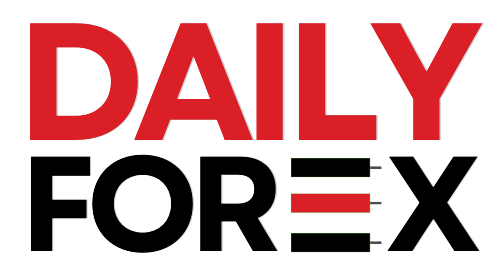As global trade fractures into rival blocs, Pakistan finds itself navigating a complex new economic reality — one where tariffs outweigh treaties, and diplomacy must move faster than disruption.
The days of multilateralism are fading, replaced by a world where economic alliances are transactional, not treaty-bound. This reset, triggered by rising protectionism, supply chain wars, and strategic resource realignments, offers both danger and opportunity for emerging economies — especially Pakistan.
⚠️ The Global Shift: From Free Trade to Strategic Protectionism
The U.S.–China trade war has reshaped global commerce. President Trump’s latest move — a sweeping 10% universal tariff (with some rates spiking up to 145% on Chinese goods) — has shattered the old rulebook. China responded with counter-tariffs and currency moves, while WTO mechanisms remain paralyzed.
Pakistan wasn’t spared. Tariffs on its exports surged to 29%, later paused under a 90-day executive hold. But that grace period is ticking down. Unless Pakistan recalibrates its trade posture, the hit could be severe: $1.4 billion in annual losses, and over 500,000 jobs at risk, especially in textiles.
🧵 Textile Exports Under Fire — But Still Holding Ground
Textiles, which account for three-fourths of Pakistan’s U.S.-bound exports, are in the crosshairs. Ironically, Pakistan is also America’s top cotton importer, spinning raw U.S. cotton into finished goods for re-export — a unique value loop.
But Pakistan’s internal policies disrupted that chain. The Export Facilitation Scheme failed to exempt domestic cotton, driving mills to prefer U.S. imports. Recent government moves to correct this may help with optics in Washington, but at home, dozens of spinning units have shut down, and ginning operations are in crisis.
Still, there’s hope. From July to March FY25, textile exports climbed to $13.62 billion, up 9.38% YoY. Apparel, knitwear, and home textiles led the rise — proof that demand still exists if Pakistan stays competitive.
⚙️ Structural Flaws Are Pakistan’s Biggest Risk
The real threat isn’t just tariffs — it’s Pakistan’s high energy costs, slow refunds, and outdated customs systems that make its exports uncompetitive even without tariff barriers.
- 💡 Electricity for industry costs up to Rs 44/kWh — over 2x China and 3x India
- 🧾 Customs delays, physical invoicing, and regulatory loopholes hamper exporters
- ⚖️ GST refunds remain delayed, stalling working capital and production
If these issues persist and tariffs return, U.S. buyers will look elsewhere — and Pakistan may lose ground to Vietnam, Bangladesh, and others already preparing to absorb redirected demand.
🤝 Diplomacy & Diversification Must Go Hand-in-Hand
Pakistan’s Ministry of Commerce is preparing for high-level talks with U.S. officials — but to succeed, the pitch must be broader than just cotton.
Here’s the winning playbook:
- 📈 Position textile trade as a bilateral value loop that creates jobs in both countries
- 🛢️ Increase U.S. imports — cotton, soy, energy — to rebalance optics
- 🧠 Pair trade with digital exports ($3.2B in IT services in 2024) and critical minerals
- ⚙️ Commit to reforms in customs, tax refund systems, and energy pricing
- 🌍 Highlight Pakistan’s regional importance in diversifying U.S. supply chains
📊 A Delicate Balancing Act: Surplus Without Suspicion
Pakistan posted a $619 million current account surplus in March 2025, thanks to record remittances of $4.1B. While this strengthens Pakistan’s fiscal outlook, it also risks being misread in Washington as a trade imbalance.
To preempt this, Pakistan must clarify:
✅ The surplus is remittance-driven, not export-fueled
✅ Pakistan imports U.S. commodities in high volumes
✅ Its exports sustain U.S. agriculture and jobs
🔮 The Road Ahead: Adapt Fast or Fall Behind
Global trade now functions more like chess than checkers — and Pakistan must start thinking several moves ahead.
- 📦 Countries like India have digitized customs and slashed clearance times
- 🔋 Vietnam, facing U.S. tariffs up to 46%, offers Pakistan a temporary window to rise
- 📉 Pakistan’s manufacturing shrinkage and input delays can no longer be tolerated
If Pakistan acts fast — by reforming logistics, lowering power costs, and building stronger bilateral trade optics — it can emerge as a regional supply chain hub. If it doesn’t, it may be squeezed out of the very markets it helped build.
🎯 Final Word: The Future Belongs to Economic Hedgers
Pakistan doesn’t need to pick sides — it needs to play all sides smartly. It must:
- 🤝 Trade with China
- 📞 Negotiate with the U.S.
- 🛠️ Reform at home
- 🚀 Hedge for the future
In today’s fragmented global order, agility is power. If Pakistan can move quickly, frame the right narratives, and fix structural gaps, it can still win — not just survive, but lead the next chapter of global trade realignment.
📢 For more sharp insights on Pakistan’s trade future, economic reforms, and global positioning, stay tuned to www.dailyforex.pk — your guide to navigating the new financial world.




